- Home
- Henry James
Letters from the Palazzo Barbaro Page 2
Letters from the Palazzo Barbaro Read online
Page 2
“As you live in it day after day its beauty and its interest sink more deeply into your spirit; it has its moods and its hours and its mystic voices and its shifting expressions …
“If in the absence of its masters you have happened to have it to yourself for twenty-four hours you will never forget the charm of its haunted stillness, late on the summer afternoon for instance, when the call of playing children comes in behind from the campo, nor the way the old ghosts seemed to pass on tiptoe on the marble floors.”8
In the summer of 1892 Isabella Stewart Gardner, having the house chock-full of guests, had a canopied bed, with a pink mosquito net9, placed in “the divine old library”, on the top floor, a room also decorated with delicate stucco medallions and eighteenth century boiseries à la chinoise. James spent delightfully quiet days there, in spite of the scorching scirocco, allowing the beauty of the place to sink into himself, almost passively. He wrote about it, with some humour, to Mrs. Curtis (XV), telling her that she, the real mistress of the house, did not know her own house at all:
“Have you ever lived here?—if you haven’t, if you haven’t gazed upward from your couch, in the rosy dawn, or during the postprandial (that is after luncheon) siesta, at the medallions and arabesques of the ceiling, permit me to tell you that you don’t know the Barbaro.”
The enchantment Palazzo Barbaro exercised on the writer is parallel with that wrought on him by the whole city: James started to dream about having his own pied-à-l’eau in Venice (XIII, XIV, XVII, XIX).
The young James arriving in 1869 in Italy, and in Venice for the first time aged twenty-five, found that Venice was “quite the Venice of one’s dreams”, although it remained “strangely the Venice of dreams, more than of any appreciable reality”.10 At that time he felt the need to declare to his brother the sense of his “yankeehood”, which did not allow him to enjoy Venice from the inside, as a part of his own civilization, unlike his experience in England (Letter I). This statement was at least partly contradicted by the ecstatic tone with which James wrote to his brother, in the very same letter, of the deep and overwhelming impression made on him by Tintoretto. The enormous mass of Tintoretto’s works was looked at by James in the wake of Ruskin.11 It was not a coincidence that James adored Tintoretto as a colourist and also for his extraordinary perspectives, or points of view, and the compositions of his paintings:12 in his enthusiasm for Tintoretto, James seemed to see the extraordinary achievements in the use of viewpoint that would characterize the twentieth century novel, which owed so much to James himself.
No doubt James was conquered by, or gave himself up to Venice gradually, contrary to his response to Rome, as expressed in his famous and oft-quoted letter, where he declared “At last—for the first time—I live!”13
By the 1890s, James had had the opportunity of enjoying the city during various visits, staying in different houses: he no longer used the lodgings of Casa Barbesi, or the rooms on the Riva degli Schiavoni where he had been vainly trying to write The Portrait of a Lady. He had enjoyed the hospitality of Mrs. Bronson’s Casa Alvisi, on the Grand Canal, right across from the Salute, and then that of the Curtises at Palazzo Barbaro. He had had the time to possess himself of the city, writing on it on several occasions, in the essays, from Venice: an Early Impression in 1872 to Venice in 1882 and The Grand Canal in 1892, where the writer took his reader along the main watery thoroughfare of Venice as if he were following one of those nineteenth century guides illustrating the main palaces on both sides of the Canal, from its beginning, at San Marco, to the Accademia and Rialto and finally to the Station. By 1892 James had written both short stories and novels at least partly set in Venice, and above all The Aspern Papers (1888). Perhaps towards the end of the 1880s or at the beginning of the 1890s James really dreamed of having a small pied-à-terre in Venice. But in the summer of 1893 he acknowledged this wish was a mere dream, “fading a little” (XIX) when he was not there.
Other, tragic, experiences intervened to defeat the dream. On January 24th, 1894, Constance Fenimore Woolson, an American writer, a descendant of James Fenimore Cooper, and a dear friend of James, committed suicide, throwing herself out of the window of Palazzo Semitecolo.14 James had in 1886 shared a house with her, Villa Brichieri, at Bellosguardo, living however on different floors. James’s letters to Mrs. Bronson (XXI, XXII) do not hide or mask the impression of horror which Miss Woolson’s death had wrought on James. A sense of horror clearly accompanied by a sense of guilt—it does not matter whether justified or not—that crops up also in the long explanation of Miss Woolson’s death that James felt himself impelled to give to Mrs. Bronson a few days after her suicide. The act, according to James, was caused by “some violent cerebral derangement”, and everything seemed to prove this since Miss Woolson, a successful writer, was “liked, peculiarly, by people who knew her”, and her relations “adored her”. James seems to wish to persuade Mrs. Bronson, but above all himself, that a person so beloved by everybody should not have expected any love from himself. The “strange obscurity” of the facts covers up the difficulty of a relationship that seems to have become clear to James only after Miss Woolson’s death, with the sudden violence, which the reader will find in such a story as The Beast in the Jungle.
Miss Woolson’s death marked, for James, a period of detachment from Venice, or even of horror towards it. On July 29, 1894, James wrote to Mrs. Gardner (XXIII). Not only will he not be in Venice when “Mrs. Jack” holds her court at Palazzo Barbaro, but perhaps he will not return, ever, to Venice, because the city has been “simply blighted”: a beautiful flower, killed by the frost of death. To Mrs. Curtis, James wrote: “How strange and empty Venice seemed to me, without you. The light is white and absent …”.15 The “bright Venetian air” has lost its splendour and colour. Even Palazzo Barbaro is “lovelier than ever—but what’s the use?” What James did not write to Mrs. Gardner in his letter was what he had been doing in the three months he had spent in Venice, staying in that Casa Biondetti where Miss Woolson had lived before moving to Palazzo Semitecolo, and where he had acted as her literary executor. More than one contemporary witness wrote of James recounting in a suppressed, devious way, of the “execution”, or suppression of, Miss Woolson’s papers—and even of her black clothes16—in the black waters of the lagoon. One can add Zina Hulton’s version:
“Then he [Henry James] told me that when he had sorted out a few manuscripts of hers [Miss Woolson’s] which were complete, there remained a great mass of notes and commencements and other worthless fragments. After thinking the question over, he decided to destroy all these by drowning them in the lagoon. So he went far out in a gondola and committed them to the water where it was really deep.”17
Death, the cancellation of what is dearest to a writer, his or her work, is represented by drowning in the deepest waters of the lagoon. The story of James’s relationship with Venice becomes gloomy, ominous. Gone is the “bright Venetian air”.
PALAZZO BARBARO AND
THE WINGS OF THE DOVE
James’s relationship with Venice revived only after a period of time. The enchantment of Palazzo Barbaro merged with the experience of Miss Woolson’s death. Miss Woolson’s death recalled other deaths, such as that of Minnie Temple, James’s cousin, in his youth,18 and other impressions and emotions, to produce a masterpiece. James’s great narrative art drew on these different experiences, at the time when the writer was the absolute master of form19 and language, to produce The Wings of the Dove, the supreme homage to Venice and to Palazzo Barbaro: the supreme homage, because in this novel James built a palazzo made of words which is more real and enduring than that made of bricks and Istria stone and gilded stucchi.
James gives the name “Palazzo Leporelli” to the historic Venetian dwelling of the novel where Milly Theale, the young heiress who knows she has little time left, decides to live as much as she can and to live out her final days. The palace is the “great gilded shell” where Milly “with servants, frescoes, tapestr
ies, antiquities, the thorough make-believe of a settlement”, locks herself in, almost as if “in a fortress”, in the “ark of her deluge”, a place where she can “float on and on”, with the feeling that has become a metaphor, of “never going down, of remaining aloft in the divine, dustless air, where she would hear but the splash of the water against stone”.20
Palazzo Leporelli, the quintessence of the “dream city”, as James had written to La Farge in 1869, is Milly’s extreme effort to resist death and at the same time to taste life. She is “the priestess” who sees the work of art as the centre of her ritual. Palazzo Leporelli is an “appearance” which is not only the city’s ambiguous reflection of herself in the water, but also that of life and above all of art.
James’s long description of the palace is written in a prose that has now reached an acme of rarefied intensity:
“Not yet so much as this morning had she felt herself sink into possession; gratefully glad that the warmth of the southern summer was still in the high, florid rooms, palatial chambers where hard, cool pavements took reflections in their lifelong polish, and where the sun on the stirred sea-water, flickering up through open windows, played over the painted ‘subjects’ in the splendid ceilings—medallions of purple and brown, of brave old melancholy colour, medals as of reddened gold, embossed and be-ribboned, all toned with time and all flourished and scolloped and gilded about, set in their great moulded and figured concavity (a nest of white cherubs, friendly creatures of the air) …” (page 282)
She has used her wealth to counter-attack her destiny, to live. “One can’t do more than live,” she says to Lord Mark shortly before she dies. In order to live, she has chosen the most precious treasure civilization can offer her, a palace where enclosure does not mean imprisonment but freedom:
“She insisted that her palace—with all its romance and art and history—had set up round her a whirlwind of suggestion that never dropped for an hour. It wasn’t therefore, within such walls, confinement, it was the freedom of all the centuries.” (page 309)
Milly can leave outside the palace the necessities of life, its intrigues and betrayals, and also the passions of life—the conditions that Merton Densher imposes on Kate Croy in order to continue plotting their dreary planning21—symbolized in that Venice “all of evil”, “profaned and bewildered by some reverse of fortune”, lashed by rain.
Milly has chosen her “ark”, which could save her from the deluge, reconstructing a “court”, more than once compared—in its composition and characters—to a painting by Veronese22. With the creation of Palazzo Leporelli, James pays the ultimate homage to the city of art—Venice, but also, in a wider sense, to his own world, the world of art, his own fortress—showing that one can do more than just live: write. Milly’s—and James’s—palace, which had found its “germ” in his impressions of Palazzo Barbaro, now has a literary reality, independent of real life.
When the novel was finished, and the past exorcised, James could leave behind also the “germ”, or the “model” which he had used to build his own Palazzo Leporelli. This is clear in James’s letter to Alvin L. Coburn, the artist who was to photograph the places of James’s fiction for the New York Edition (1907–09). In James’s letter (XXVII) it is quite clear that Palazzo Barbaro no longer had a great importance in relation to Palazzo Leporelli. James wrote to Coburn that he had had Palazzo Barbaro “vaguely” in mind, an affirmation quite obviously “false” as regards the genesis of Palazzo Leporelli, but quite “true” in 1907, when—to illustrate the meaning of the novel—a “sort of symbolised and generalised Venice” would be just as appropriate.
James also gave Coburn some directions on the possible perspectives from which to photograph Palazzo Barbaro, but he quickly advised Coburn to use “some other palace” if none of these perspectives “yielded something” Coburn felt was “effective”. The main thing was to have an “effective” image, rendering the quintessence of Venice in its “noble and fine aspect” rather than in its “shabby and familiar” mode. James wanted Coburn to catch and express that sense of history—and art—which Palazzo Leporelli held in “its great lap”, that past civilization which “the ghost of old Daniele” [Barbaro] and the other great humanists of the family, had contributed to the city. These were figures who were now only ghosts, but whose voices the writer evoked in the Preface to A London Life, in 1908:
“[ I ] remember in fact beginning it [A London Life], in one of the wonderful faded back rooms of an old Venetian palace, a room with a pompous Tiepolo ceiling and walls of ancient pale-green damask, slightly shredded and patched, which, on the warm mornings, looked into the shade of a court where a high outer staircase, strikingly bold, yet strikingly relaxed, held together one scarce knew how; where Gothic windows broke out, on discoloured blanks of wall, at quite arbitrary levels, and where above all the strong Venetian voice, full of history and humanity and waking perpetual echoes, seemed to say more in ten warm words, of whatever tone, than any twenty pages of one’s cold prose.”23
JAMES AND THE ASPERN PAPERS
These letters tell us the story of the relationship of the writer with the city and with one of its most splendid palaces, opening new perspectives and showing us the way in which the imagination of a great writer works in the process of transforming impressions of reality into the more real life of fiction. But these letters of course also tell us much about James’s everyday life and contacts.
They tell us, for example, about the characters of that “queer, polyglot, promiscuous society” which James frequented both in Florence and in Venice—but also in London and in Paris, a society that seems to weigh more and more on the writer as the years go by, as it eroded time from his writing. But even among these characters belonging to a glittering, often frivolous world, which always liked to have some royalty in its set, be it a pretender or an exiled king, James did manage to find some true friends and some “germs” for his fiction. Even in the most frivolous and mundane conversation, James could suddenly find a trifle, a glittering ice shard that opened up his imagination.
It was in fact in Florentine society—described at length and compared to that of Venice (III, IV)—that James first heard the story of Byron’s letters, some of which Countess Gamba, who had inherited them from Teresa Gamba Guiccioli, managed to burn24. This was a story that attracted James’s imagination, always alert both to the precious value of any “paper” written by a great poet and to the necessity to preserve the privacy of the writer—as his burning of so many of his own papers shows. The Venetian setting where James transferred the story of Jeffrey Aspern’s papers, in The Aspern Papers (1888), a short novel which is also a psychological thriller, testifies to James’s conscious use of the tradition of the representation of Venice. In the devious and secret Venice of The Aspern Papers, James used the traditional Anglo-Saxon representation of the city as an attractive and at the same time dangerously alluring place, according to the tradition created by Nash and Shakespeare, Radcliffe and Cooper, and in some measure, by Byron himself.25
In The Aspern Papers this representation of Venice was masterfully deprived of its exterior gothic features and became the objective correlative of psychological states and pursuits. The labyrinthine alleys of the city are the echoing mirror of the labyrinths of the mind, of the devious purposes of the character who wants to lay his hands on Jeffrey Aspern’s letters, and of the owner of the letters, Juliana, who holds on to them with just as secret and devious a plotting, ready to release the letters only under her own unacceptable conditions.
But in The Aspern Papers one can also perceive an echo of James’s notes on the poverty and the decadence of the city, after Napoleon’s plundering. The great barren hall of the palace where Juliana and Tita live is the real and symbolic entrance to the treasure room where Juliana, even on the threshold of death, stands her guard and catches the “publishing scoundrel” red-handed; it is also a strong image of a city robbed of its treasures, where everything has its price, where
everything can be bought: Tiepolo ceilings, rococo chairs, whole family archives. In this world of moral and material decadence, money—the enormous amount of money Juliana asks her guest as rent for a few, empty rooms—buys hospitality. In James’s world, where so many exchanges involving money, concern works of art, there can be an even more radical—and blackmailing—exchange: marriage. The society of antique dealers, the various Carrers and Richettis and Riettis who sold everything they could find, laying waste whole palaces, seems to be governed by very simple economic rules, in a sort of rough innocence, as compared with the complex plots of buying and selling that go on in The Aspern Papers.
JAMES AND SOCIETY
An episode that James heard in a Florentine salon gave birth to a small and perfect masterpiece.
Characters glimpsed during a tea party or an elegant dinner offered the “germs” for possible new characters in fiction. In Venice, Princess Olga of Montenegro, the daughter of Queen Darinka, the widow of the assassinated King of Montenegro, “the poor little princess with no money or art” became “a possible subject, needing to be a little filled out”.26
The royal wealth of Isabella Stewart Gardner, with her black clothes made by the Parisian designer Worth, and her famous, long, long string of perfect pearls, who together with the Countess Pisani reminded James of the romantic heroines of English novels (IV), became possible “germs” for the sublime character of Milly Theale. Good Mrs. Bronson, Browning’s friend in the last years of the poet’s life, suggested to James the character of Mrs. Prest in The Aspern Papers. James pondered at length on Browning himself as a possible character for a story.27

 The American
The American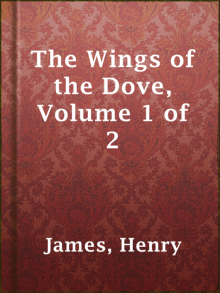 The Wings of the Dove, Volume 1 of 2
The Wings of the Dove, Volume 1 of 2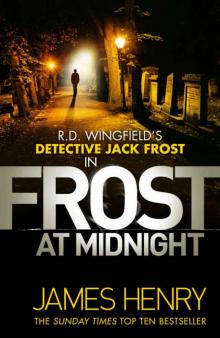 Frost at Midnight
Frost at Midnight Morning Frost
Morning Frost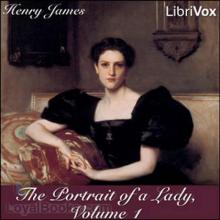 The Portrait of a Lady — Volume 1
The Portrait of a Lady — Volume 1 Fatal Frost
Fatal Frost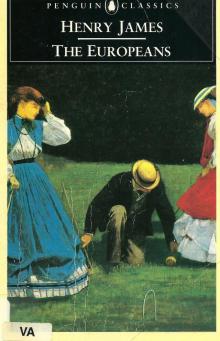 The Europeans
The Europeans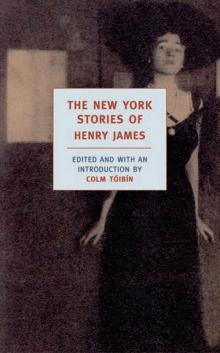 The New York Stories of Henry James
The New York Stories of Henry James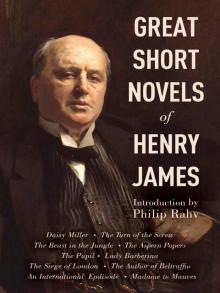 Great Short Novels of Henry James
Great Short Novels of Henry James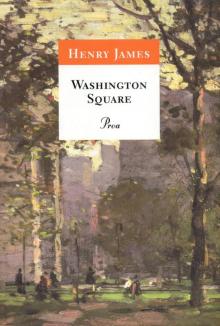 Washington Square
Washington Square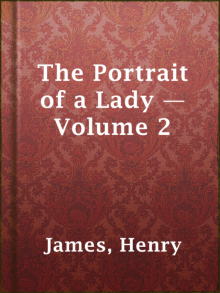 The Portrait of a Lady — Volume 2
The Portrait of a Lady — Volume 2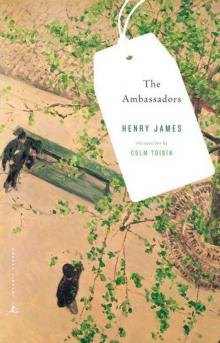 The Ambassadors
The Ambassadors The Wings of the Dove
The Wings of the Dove The Princess Casamassima (Classics)
The Princess Casamassima (Classics) The Coxon Fund
The Coxon Fund First Frost
First Frost Henry James
Henry James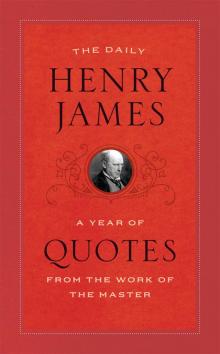 The Daily Henry James
The Daily Henry James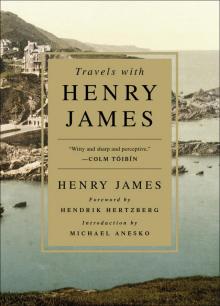 Travels With Henry James
Travels With Henry James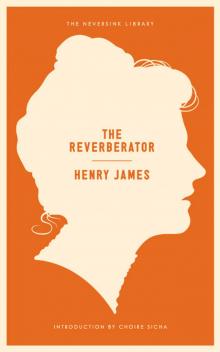 The Reverberator: A Novel
The Reverberator: A Novel What Maisie Knew (Henry James Collection)
What Maisie Knew (Henry James Collection)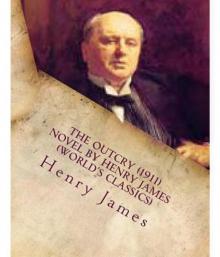 The Outcry
The Outcry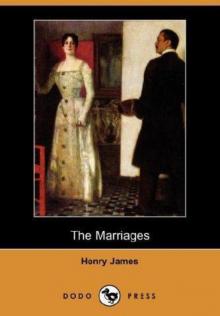 The Marriages
The Marriages The Wings of the Dove, Volume 2
The Wings of the Dove, Volume 2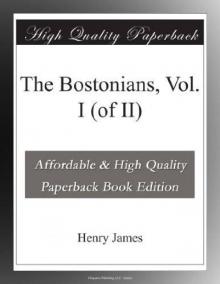 The Bostonians, Vol. I
The Bostonians, Vol. I The Outcry: -1911
The Outcry: -1911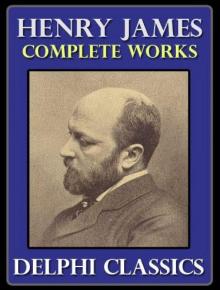 The Complete Works of Henry James
The Complete Works of Henry James Letters from the Palazzo Barbaro
Letters from the Palazzo Barbaro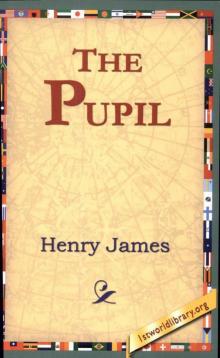 The Pupil
The Pupil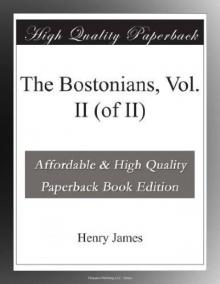 The Bostonians, Vol. II
The Bostonians, Vol. II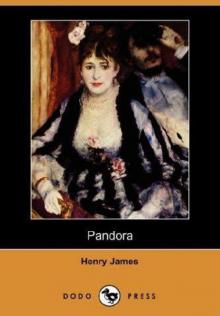 Pandora
Pandora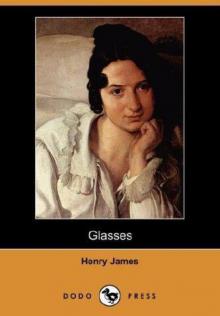 Glasses
Glasses The Princess Casamassima
The Princess Casamassima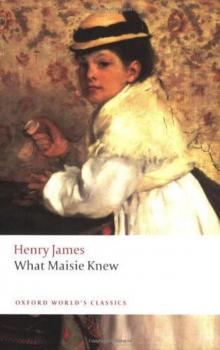 What Maisie Knew
What Maisie Knew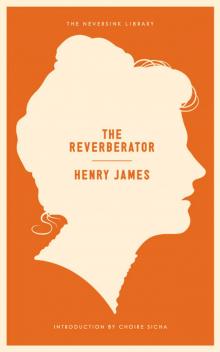 The Reverberator
The Reverberator The Golden Bowl - Complete
The Golden Bowl - Complete Confidence
Confidence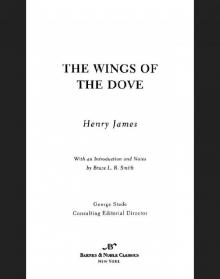 Wings of the Dove (Barnes & Noble Classics Series)
Wings of the Dove (Barnes & Noble Classics Series)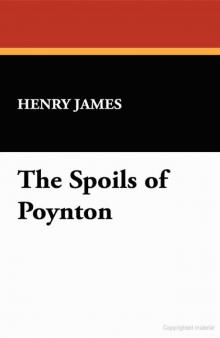 The Spoils of Poynton
The Spoils of Poynton